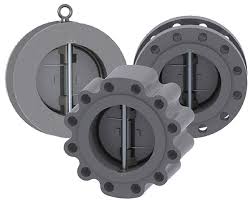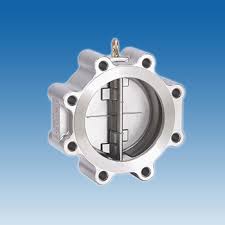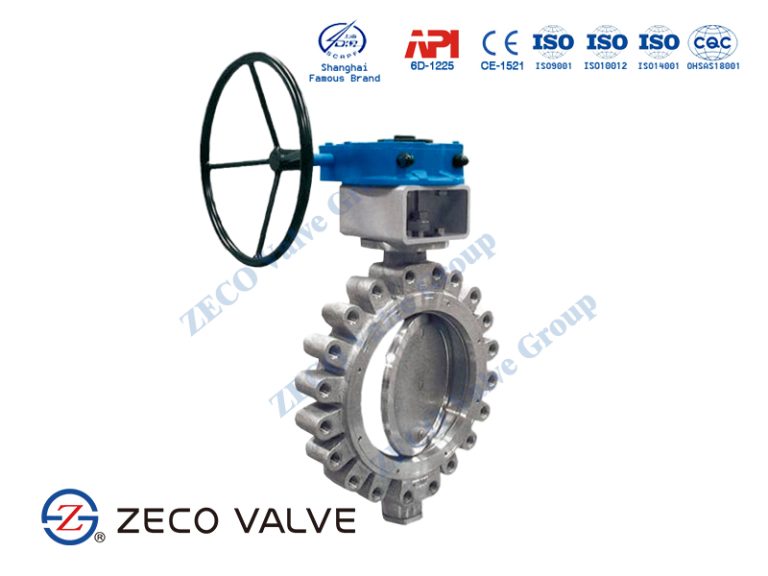Lug Type Dual Plate Check Valve Retainerless

The Application of Lug Type Dual Plate Check Valve
Cameron’s Lug Type Dual Plate Check Valve is a versatile and reliable valve solution designed for a wide range of industrial applications. The dual plate design, combined with the lug type attachment, offers exceptional performance and flexibility. This check valve ensures efficient unidirectional flow, preventing backflow and protecting critical system components. Commonly used in pipelines, pumping systems, and process equipment, the Cameron Lug Type Dual Plate Check Valve is known for its robust construction, easy maintenance, and ability to handle various media, including water, oil, gas, and other fluids. With its superior sealing capabilities and ability to withstand high pressures, this check valve is an excellent choice for demanding industrial environments where reliable operation and safety are of utmost importance.
What Are The Types Of Lug Type Dual Plate Check Valve?
- Wafer Type Lug Dual Plate Check Valve:
This design features a slim, wafer-style body that fits between two flanges in the pipeline. The lug-style bolt pattern allows for easy installation and removal. - Flanged Lug Dual Plate Check Valve:
This type has a full-face flanged body design, with a lug-style bolt pattern for secure installation between pipeline flanges. - Threaded Lug Dual Plate Check Valve:
These check valves have a threaded end connection, allowing for direct installation into threaded pipe fittings without the need for flanges. - Grooved Lug Dual Plate Check Valve:
This variant features grooved end connections, enabling quick and easy installation using grooved-end piping components and couplings. - High Performance Lug Dual Plate Check Valve:
Designed for more demanding applications, these check valves incorporate enhanced features like anti-slam devices, corrosion-resistant materials, and higher pressure ratings.
What Is Lug Type Dual Plate Check Valve?
A Lug Type Dual Plate Check Valve is a type of check valve that utilizes a design with two independent, hinged plates or discs within a compact, lug-style body. The dual plates open to allow unidirectional flow and close automatically to prevent backflow, providing reliable check valve functionality. The lug type body design features integral lugs or tabs that allow the valve to be securely bolted between pipeline flanges, simplifying installation. This check valve design offers space-saving benefits, easy maintainability, and the ability to handle a wide range of fluid media in various industrial applications, such as pipelines, pumping systems, and process equipment.
How to Select the Right Lug Type Dual Plate Check Valve?
When selecting the appropriate Lug Type Dual Plate Check Valve, key factors to consider include the flow rate, system pressure, media compatibility, and end connection requirements. The valve size should be matched to the pipe diameter to ensure optimal flow characteristics. The material of construction, such as metal or polymer, should be compatible with the fluid being handled. Pressure rating is also crucial, as the valve must be able to withstand the maximum system pressure. Additionally, the end connection style, whether flanged, threaded, or grooved, should align with the existing pipeline configuration for a secure and leak-free installation. By carefully evaluating these critical parameters, users can ensure the selection of the right Lug Type Dual Plate Check Valve for their specific application, guaranteeing reliable performance and a long service life.
Features of Lug Type Dual Plate Check Valve
Compact Design: The Lug Type Dual Plate Check Valve features a space-saving, compact body that can be easily installed between pipeline flanges.
Dual Plate Structure: The valve utilizes a unique dual plate design, with two independent, hinged discs that open to allow flow and close to prevent backflow.
Lug-Style Mounting: The lug type body design incorporates integral lugs or tabs, enabling secure bolted installation between pipeline flanges.
Reliable Operation: The check valve’s dual plate mechanism ensures reliable, automatic closure to prevent reverse flow, protecting downstream equipment.
Versatile Applications: These check valves are suitable for a wide range of industrial applications, including pipelines, pumping systems, and process equipment.
Easy Maintenance: The simple, straightforward design of the Lug Type Dual Plate Check Valve allows for easy inspection and maintenance.
Corrosion Resistance: Valves can be constructed with corrosion-resistant materials to handle various media, including aggressive fluids.
Advantages and Disadvantages of Lug Type Dual Plate Check Valve
Advantages of Lug Type Dual Plate Check Valve:
Compact Design: The lug-style body provides a space-saving solution that can be easily integrated into tight pipeline spaces.
Secure Bolted Installation: The integral lugs allow for secure bolted mounting between pipeline flanges, simplifying installation.
Reliable Backflow Prevention: The dual plate mechanism ensures automatic and reliable closure to prevent reverse flow.
Versatile Applications: These check valves can be used in a wide range of industrial applications, handling various media.
Easy Maintenance: The straightforward design facilitates easy inspection and maintenance of the valve components.
Corrosion Resistance: Available in corrosion-resistant materials to withstand aggressive fluid environments.
Disadvantages of Lug Type Dual Plate Check Valve:
Pressure Drop: The dual plate design may result in a slightly higher pressure drop compared to some other check valve types when in the fully open position.
Potential for Wear: The hinged plates and sealing surfaces can be susceptible to wear and tear over extended periods of use, requiring periodic maintenance.
Limited Size Range: Lug Type Dual Plate Check Valves may not be available in as wide a range of sizes as some other check valve designs.

The Specifications of Lug Type Dual Plate Check Valve
| Specification | Details |
|---|---|
| Type | Lug Type Dual Plate Check Valve |
| Ball Material | N/A (This is a dual plate design, not a ball valve) |
| Attachment Type | Lug |
| Thread Standard | N/A (Flange connections, not threaded) |
| Thread Size | N/A (Flange connections, not threaded) |
| Body Material | Carbon Steel, Stainless Steel, Alloy Steel |
| Safe for Use With | Water, Oil, Gas, Chemicals, and other compatible fluids |
| Handle Type | N/A (No handle, actuated by pipeline flow) |
| Handle Material | N/A (No handle) |
| Maximum Working Pressure | 300 psi (21 bar) |
| Maximum Working Pressure | 21 bar |
| Operating Pressure | 10-200 psi (0.7-14 bar) |
The Installation Steps for Lug Type Dual Plate Check Valve
1. Prepare the Pipeline:
- Ensure the pipeline is properly aligned and free of any debris or obstructions.
- Measure the exact pipe diameter to select the appropriate valve size.
2. Position the Valve:
- Place the valve between the two pipeline flanges, aligning the lug holes with the flange bolt holes.
3. Secure the Valve:
- Insert the flange bolts through the lug holes and tighten them evenly to the recommended torque specification.
- Typically, hex head or socket head cap screws are used for this purpose.
4. Connect the Pipework:
- Attach the upstream and downstream pipeline flanges to the valve’s flange connections.
- Ensure a tight, leak-free seal between the valve and the pipework.
5. Inspect the Installation:
- Visually inspect the valve installation for any misalignment or potential leaks.
- Perform a pressure test to verify the integrity of the connections.
6. Commission the System:
- Slowly introduce flow into the pipeline and check the valve’s operation.
- Observe the valve’s opening and closing behavior to ensure proper functioning.
7. Ongoing Maintenance:
- Periodically inspect the valve for any signs of wear or damage.
- Follow the manufacturer’s recommended maintenance schedule for optimal performance.
The Operation Theory of Lug Type Dual Plate Check Valve
1. Flow Direction:
- The dual plate design of the check valve allows for unidirectional flow.
- When the fluid flows in the intended direction, the two hinged plates open to allow the passage of the media.
2. Backflow Prevention:
- In the event of backflow or reverse flow, the two plates automatically close to prevent the media from flowing back.
- This backflow prevention mechanism protects downstream equipment and maintains the integrity of the system.
3. Plate Movement:
- The two plates are independently hinged and can move freely to respond to the flow direction.
- When the flow is in the forward direction, the plates open to minimize resistance and pressure drop.
- When the flow reverses, the plates close tightly to create a seal and stop the backflow.
4. Closing Force:
- The closing force on the plates is provided by the system pressure and the weight of the plates themselves.
- As the reverse flow increases, the pressure differential across the valve increases, further enhancing the closing force on the plates.
5. Reliable Operation:
- The simple and robust dual plate design of the lug type check valve ensures reliable and consistent operation.
- The lack of complex mechanisms or moving parts minimizes the potential for failure or malfunction.
6. Versatility:
- The dual plate lug type check valve design can be adapted to handle a wide range of fluid media, including liquids, gases, and even some slurries.
- The choice of materials of construction allows for compatibility with various corrosive or aggressive substances.
